Imaging: Venus, ISS, Uranus, Zodiacal Light,
M81, M82, Jupiter
Posted: 8 February 2015
|
Open: Saturday, 7 February 2015, 1730 MST Temperature: 84°F |
Session: 778 Conditions: Clear |
Opened the observatory before sunset to prepare for a pass of the International Space Station (ISS). This was a low elevation pass so the ISS would be a long line-of-sight distance from Cassiopeia Observatory. It would start 32 minutes after sunset so it would appear against a still bright twilight sky.
1740 MST: viewed Venus, 83X. It was a nice view against a still bright blue sky 21 minutes before sunset.
Updated the ISS TLE. Mounted the D7000 DSLR at prime focus + 2X PowerMate. Checked the finderscope alignment; OK. Since the sky was still bright, I used Venus as a focus test object. This is a stack of 264 HD video frames, 1/800sec, ISO 2000, using Keith's Image Stacker:
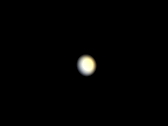
The slight gibbous phase is visible.
When the ISS pass started, the initial telescope pointing was off. Once I caught up to the station, tracking was pretty good. Since the line-of-sight distance was so long and the view was through a lot of atmosphere as the ISS was low in the sky, the details in the HD video, 1/1250sec, ISO 4000, prime focus + 2X PowerMate, were not very good. However, selected frames from the video as the pass progressed show the changing perspective of the ISS during the pass:

After the pass was completed I slewed the 8" LX200-ACF to Uranus and began imaging it at prime focus + 2X PowerMate. This is a single frame image, 1/10sec, ISO 4000, showing the color of the planet's atmosphere:

1900 MST: ended imaging and removed the camera from the telescope. Viewed Uranus, 166X. It was a good view of the planet. At 83X, the disk was still clearly visible.
1907 MST: the Zodiacal Light was now visible in the western sky. This slightly cropped fisheye lens (8mm FL) photo, f/5.6, 30 seconds, ISO 1600, shows the Zodiacal Light and several other things in the sky:
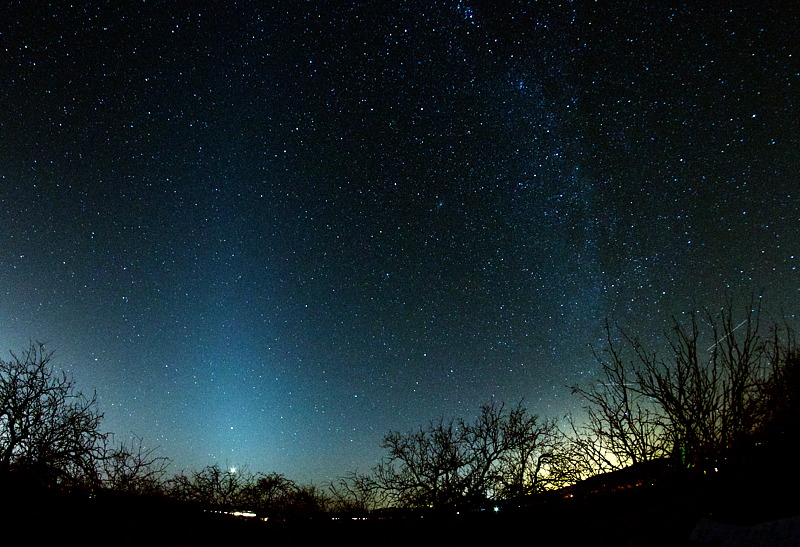
Mouseover or tap on image for labels
I wondered if I could photograph the Zodiacal Light using NightCap Pro on the iPhone 5s. I set up the iPhone on my POD Roller Desk using a GorillaPod. Using Light Boost and Long Exposure with a 1 minute exposure, this is the resulting (edited) image:
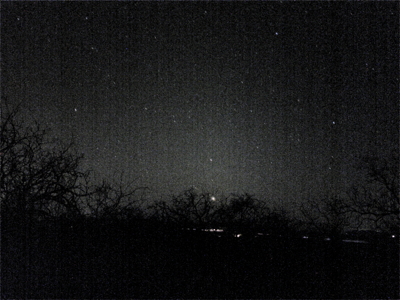
The brightest portion of the Zodiacal Light was indeed captured on the iPhone 5s. Amazing.
1956 MST: began setting up for D7000 DSLR prime focus imaging of the galaxies M81 and M82 for my Messier Photo Album. I had previously imaged them but wanted to see if I could improve the results. After doing a focus test image on the star Pollux using a Bahtinov Mask, I slewed to M81 and began looking for a guide star to use with the off-axis guider. After doing a couple of framing test exposures, I found a very faint guide star. This is a slightly cropped, guided 10 minute, ISO 5000, exposure of M81:
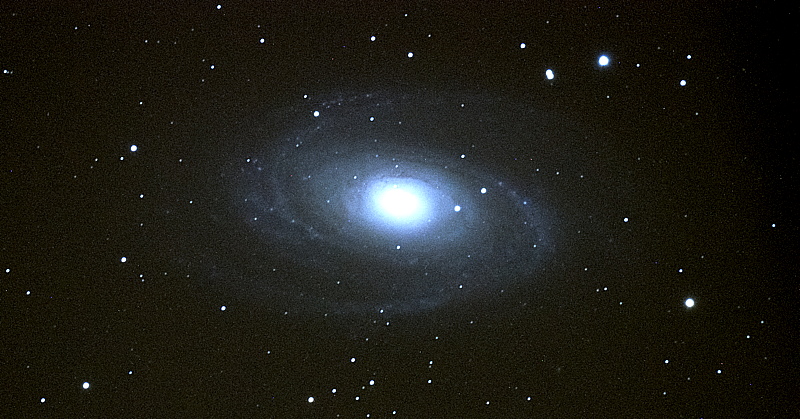
I then slewed to M82 and found a faint guide star. This is a slightly cropped, guided 10 minute, ISO 5000, exposure of M82:
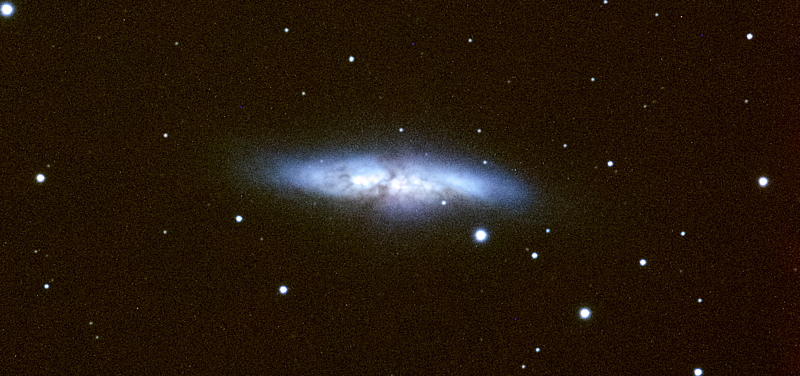
Both of these images are better than my previous ones.
2055 MST: ended DSO imaging. Slewed to Jupiter and viewed it at 83X and 166X. The four Galilean Moons were visible. Seeing was good. Set up for prime focus + 2X PowerMate imaging with the D7000 DSLR. Did a focus test on Regulus with the Bahtinov Mask. This is a stack of 501 HD video frames using Keith's Image Stacker, 1/200sec, ISO 1250:
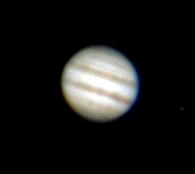
This cropped image is a composite from the same 1/30sec, ISO 1000, exposure. Jupiter and its moons were separately edited to best show them.
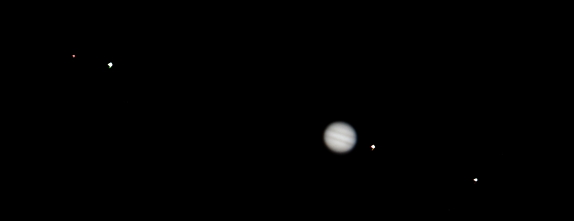
2122 MST: completed imaging. The eastern sky was beginning to brighten from the rising waning gibbous moon. I did some Jupiter observing using the Baader 8-24mm Zoom Eyepiece. The view was excellent at all magnifications. Added the Televue 2X PowerMate; all magnification were really good except for at the 8mm focal length setting, which was just an OK view. Removed the PowerMate and did some extended Jupiter viewing at the 12mm FL setting (167X). Took a final look at Jupiter using the 2" 24mm UWA eyepiece (83X).
|
Close: Saturday, 7 February 2015, 2156 MST Temperature: 54°F |
|
Comments are welcome using Email. If you are on Twitter you can use the button below to tweet this report to your followers. Thanks.
Cassiopeia Observatory Home Page
Copyright ©2015 Michael L. Weasner / mweasner@me.com
URL = http://www.weasner.com/co/Reports/2015/02/08/index.html
